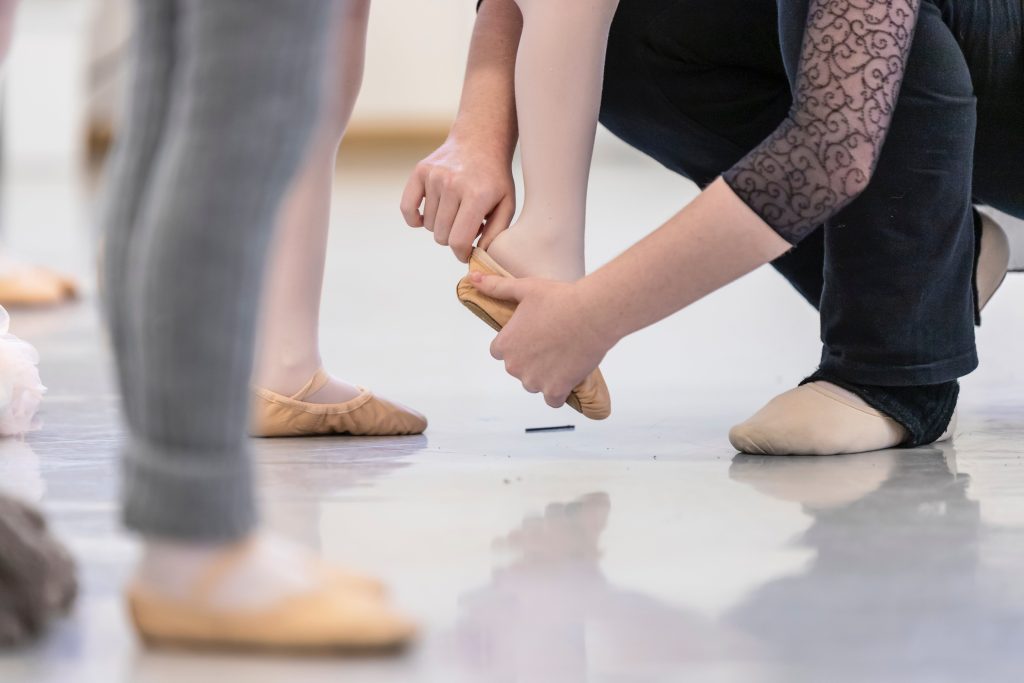Are you looking to achieve those coveted six-pack abs? If so, you’ve come to the right place! In this article, we will explore the best post-workout recovery practices specifically tailored for six-pack training. Building strong core muscles and achieving six-pack abs requires dedicated effort and a solid recovery routine. Whether you’re a fitness enthusiast or a beginner, we will address the frequently asked questions surrounding this topic and provide you with practical tips to optimize your post-workout recovery. So, let’s get started on this transformative journey towards a stronger and more defined midsection!

Nutrition
Consuming protein-rich foods
When it comes to post-workout recovery and building six-pack abs, nutrition plays a crucial role. One of the key components of a well-rounded post-workout meal is consuming protein-rich foods. Protein is the building block of muscles, and it helps repair and rebuild the muscle tissues broken down during exercise. Aim to include sources of lean protein such as chicken breast, fish, tofu, or Greek yogurt in your post-workout meal to aid in muscle recovery and growth.
Including carbohydrates in the post-workout meal
In addition to protein, it is important to include carbohydrates in your post-workout meal. Carbohydrates provide the necessary energy to replenish glycogen stores in the muscles, which can be depleted after an intense workout. Opt for complex carbohydrates like whole grains, sweet potatoes, or brown rice that digest slowly and provide a steady release of energy. Including carbohydrates in your post-workout meal will not only aid in muscle recovery but also help restore your energy levels.
Drinking plenty of water
Hydration is often overlooked but is essential for optimal post-workout recovery and overall health. During exercise, you lose water through sweat, and it is important to replenish those fluids. Drinking plenty of water post-workout helps in maintaining the balance of body fluids, aids digestion, and supports the efficient transport of nutrients to your muscles. Aim to drink at least 8-10 glasses of water throughout the day, and increase your intake during and after exercise to ensure proper hydration and aid in recovery.
Stretching and Mobility
Performing static stretches
Stretching is a fundamental practice to improve flexibility, prevent injuries, and aid in post-workout recovery. Static stretches involve holding a muscle in an elongated position for a certain period of time. These stretches help increase the range of motion in your joints and improve muscle flexibility. After your workout, spend a few minutes performing static stretches for the major muscle groups you targeted during your training session. This will help relax your muscles and prevent stiffness, allowing for faster recovery.
Incorporating dynamic stretches
Dynamic stretches involve controlled movements that mimic the exercises you’ll be performing during your workout. These stretches warm up the muscles, increase blood flow, and enhance athletic performance. Incorporating dynamic stretches into your pre-workout routine helps prepare your muscles for the demands of the upcoming workout. However, they can also be beneficial in your post-workout routine as they help prevent muscle tightness and promote recovery. Include dynamic stretches such as leg swings, arm circles, or lunges as part of your cool-down routine to aid in your post-workout recovery.
Utilizing foam rollers or massage tools for myofascial release
Foam rolling, also known as self-myofascial release, is a popular technique used to release muscle tension and improve mobility. By applying pressure on specific areas of the body using a foam roller or massage tool, you can target trigger points and knots in the muscles, promoting blood flow and relieving tightness. Incorporating foam rolling exercises into your post-workout routine can help reduce muscle soreness, increase flexibility, and aid in the recovery process. Spend a few minutes targeting the major muscle groups, such as the quadriceps, hamstrings, and calves, to experience the benefits of myofascial release.
Rest and Sleep
Allowing sufficient rest between workouts
While it can be tempting to push yourself to the limit every day, it is important to allow your body sufficient rest between workouts. Rest days are crucial for recovery, as they give your muscles time to repair and rebuild. Overtraining can lead to fatigue, decreased performance, and an increased risk of injury. Aim to have at least one or two rest days per week to give your body the chance to recover and adapt to the stress of exercise.
Getting quality sleep for muscle recovery and growth
Sleep is often underestimated when it comes to post-workout recovery. It is during sleep that your body enters a state of repair and regeneration. Adequate sleep is essential for muscle recovery, as it promotes the release of growth hormone, repairs damaged tissues, and strengthens the immune system. Aim for 7-9 hours of quality sleep each night to optimize your post-workout recovery and muscle growth. Create a sleep-friendly environment by keeping your bedroom cool, dark, and quiet, and establish a consistent sleep routine to ensure you are getting the rest you need.
Active Recovery
Engaging in low-intensity exercises
Active recovery involves engaging in low-intensity exercises after a strenuous workout. It promotes blood circulation, speeds up the removal of metabolic waste products, and assists in muscle repair. Engaging in low-impact activities such as walking, cycling, or gentle yoga can help flush out lactic acid from your muscles and reduce post-workout soreness. These exercises help keep you active without putting excessive stress on your muscles, allowing for a quicker recovery.
Doing light cardio or swimming
Light cardio exercises, such as jogging or swimming, can be an excellent way to promote recovery after an intense workout. These activities increase blood flow and deliver oxygen and nutrients to your muscles, helping them recover faster. Swimming, in particular, is a low-impact exercise that engages multiple muscle groups, providing a full-body workout while minimizing the stress on your joints. Incorporate light cardio exercises or swimming into your post-workout routine to enhance your recovery and maintain an active lifestyle.
Pursuing recreational activities
Post-workout recovery doesn’t always have to involve structured exercises. Engaging in recreational activities that you enjoy can also be a great way to promote recovery while having fun. Whether it’s playing a game of basketball with friends, going for a hike, or joining a dance class, recreational activities provide a change of pace and allow your muscles to recover in a more relaxed setting. Pursuing recreational activities not only aids in your physical recovery but also supports your overall well-being.

Cold Therapy
Applying ice packs or cold compresses to reduce inflammation
Cold therapy, also known as cryotherapy, is a popular method used to reduce inflammation and post-workout muscle soreness. Applying ice packs or cold compresses to the affected area can help constrict blood vessels, decrease tissue swelling, and alleviate pain. Cold therapy is particularly beneficial after challenging workouts or when experiencing muscle strains or acute injuries. Apply ice packs or use cold compresses for 10-15 minutes at a time, allowing your skin to return to normal temperature between sessions.
Taking contrast showers to improve blood circulation
Contrast showers involve alternating between cold and hot water, stimulating blood circulation and promoting muscle recovery. The cold water constricts blood vessels, while the hot water increases blood flow. This contrast in temperatures can help flush out metabolic waste products, reduce muscle inflammation, and enhance the healing process. After your workout, consider taking a contrast shower, alternating between 30 seconds of cold water and 30 seconds of hot water for a few cycles. Always finish with cold water to encourage blood circulation.
Heat Therapy
Using hot water baths or showers to relax muscles
Heat therapy is a simple and effective way to relax muscles and promote post-workout recovery. Taking a hot water bath or shower after your workout helps improve blood circulation and relaxes tight muscles. The warmth from the water can alleviate muscle soreness and tension, providing a soothing effect on your body. Spend some time soaking in a hot bath or showering with warm water to ease your muscles and enhance your recovery process.
Applying heat packs or warm towels for pain relief
Another method of heat therapy involves applying heat packs or warm towels to targeted areas of muscle soreness or discomfort. The heat increases blood flow to the area, which can help reduce pain and promote healing. Heat packs or warm towels can be especially beneficial for tight or strained muscles. Apply the heat pack or warm towel for 15-20 minutes, and repeat as needed. However, be cautious not to apply heat directly to an acute injury or open wound.

Supplementation
Considering protein shakes or bars to aid muscle recovery
Supplements can be a convenient way to ensure you’re getting the necessary nutrients to support your post-workout recovery. Protein shakes or bars are a popular choice for many individuals striving to build six-pack abs. They provide a quick and convenient source of protein, which is essential for muscle repair and growth. Look for high-quality protein supplements that contain a blend of different protein sources, such as whey protein, to provide a comprehensive amino acid profile.
Taking branched-chain amino acids (BCAAs) for muscle repair
Branched-chain amino acids (BCAAs) are a group of essential amino acids that play a vital role in muscle repair and recovery. BCAAs, including leucine, isoleucine, and valine, are quickly absorbed by the muscles and can be taken as a supplement to enhance post-workout recovery. They promote protein synthesis, reduce muscle damage, and decrease muscle soreness. Consider taking BCAA supplements before, during, or after your workouts to support muscle repair and aid in recovery.
Using antioxidant supplements to reduce exercise-induced oxidative stress
Intense exercise can lead to oxidative stress in the body, causing damage to cells and tissues. Antioxidants play a crucial role in reducing oxidative stress and promoting overall health. Taking antioxidant supplements, such as vitamins C and E, or consuming foods rich in antioxidants can help combat exercise-induced oxidative stress, supporting your post-workout recovery. Incorporate antioxidant-rich foods like berries, green leafy vegetables, and nuts into your diet, or consider taking antioxidant supplements to aid in your recovery process.
Massage and Bodywork
Getting regular massages to relieve muscle tension
Massages are not only a luxurious way to relax but also an effective method to relieve muscle tension and aid in post-workout recovery. Massage therapy helps increase blood flow to the muscles, reduce muscle soreness, and alleviate stiffness. Regular massages can also improve flexibility, range of motion, and overall muscle health. Consider scheduling regular appointments with a licensed massage therapist to help you recover faster and keep your muscles in top condition.
Trying techniques like deep tissue or sports massage
When it comes to post-workout recovery, deep tissue or sports massage techniques can be particularly beneficial. Deep tissue massage targets the deeper layers of muscles and connective tissues, using firm pressure to release chronic muscle tension. Sports massage, on the other hand, focuses on specific areas of the body that are frequently used in athletic activities. These specialized techniques can help break up scar tissue, promote muscle flexibility, and accelerate the recovery process. Talk to a professional massage therapist about incorporating deep tissue or sports massage into your post-workout recovery routine.
Exploring alternative therapies like acupuncture or reflexology
Alternative therapies like acupuncture or reflexology can also be effective ways to promote post-workout recovery. Acupuncture involves the insertion of fine needles into specific points along the body’s energy meridians to stimulate healing and balance. Reflexology, on the other hand, focuses on applying pressure to certain points on the feet or hands to promote relaxation and overall well-being. These alternative therapies can help reduce muscle tension, improve circulation, and support your body’s natural healing mechanisms. Consider exploring these therapies as additional tools for your post-workout recovery toolbox.

Hydrotherapy
Using hot tubs, saunas, or steam rooms to relax muscles
Hydrotherapy, or the use of water for therapeutic purposes, can be an excellent addition to your post-workout recovery routine. Soaking in a hot tub, sitting in a sauna, or spending time in a steam room all provide heat and moisture that can help relax your muscles and promote recovery. The warm water or steam helps increase blood flow, reduce muscle tension, and relieve post-workout soreness. Incorporate regular sessions in hot tubs, saunas, or steam rooms into your recovery plan to unwind and optimize your muscle recovery.
Taking contrast baths by alternating between hot and cold water
Similar to contrast showers, contrast baths involve alternating between hot and cold water, but with the addition of immersion in water. This form of hydrotherapy helps promote circulation, reduce inflammation, and aid in muscle recovery. Fill one bathtub with comfortably warm water and another with cold water. Start by immersing yourself in the warm water for a few minutes, then switch to the cold water for a couple of minutes. Repeat this cycle a few times, always finishing with cold water. This contrast in temperatures can help stimulate blood flow and facilitate the removal of waste products from your muscles.
Monitoring Progress
Keeping track of training volume and intensity
Tracking your training volume and intensity plays a crucial role in monitoring progress and optimizing your post-workout recovery. By keeping a record of the number of sets, reps, and weights used in your workouts, you can track your progress over time and make informed decisions about your training routine. Gradually increasing the training volume and intensity helps stimulate muscle growth and adaptation. Use a workout journal or a fitness app to keep track of your workouts and ensure you are progressively challenging yourself while still allowing for adequate recovery.
Recording body measurements and changes in muscle definition
Recording your body measurements and tracking changes in muscle definition provides a tangible way to assess your progress and post-workout recovery. Take regular measurements of key areas such as your waist, hips, chest, and arms to monitor changes in body composition. Additionally, take photos at regular intervals to visually track changes in muscle definition and overall physique. These measurements and visual records can serve as motivation, helping you stay on track and make adjustments to your training and recovery practices as needed.
Adjusting workout routines based on progress and goals
As you progress in your journey to build six-pack abs, it is important to regularly reassess and adjust your workout routines based on your goals and progress. Pay attention to how your body responds to different exercises and training techniques. If you are consistently experiencing excessive muscle soreness or lack of progress, it may be a sign that you need to modify your routine. Consider consulting with a fitness professional or personal trainer to help you create a well-rounded workout program that addresses your specific goals and allows for optimal post-workout recovery. Always listen to your body and be flexible in adjusting your routines to ensure continued progress and success.






